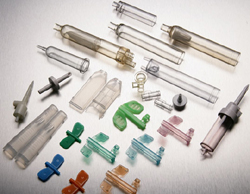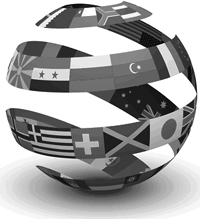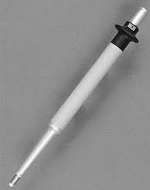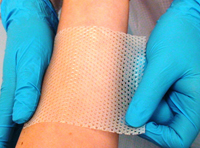|
Plastics: Empower Medical Device Industry Growth
|
Disposable Medical Supplies world demand is
forecast to expand 6.2 percent annually to $198
billion in 2016. Upgrading and enforcement of
infection prevention standards, coupled with an
expanding volume of hospital, surgical, and outpatient
procedures, will promote overall gains. 10 largest
national markets, combining to absorb nearly 70
percent of global demand in 2016: United States,
China, Japan, Germany, Russia, France, India, Italy,
United Kingdom & Brazil |
 |
|
Polymeric Drug Delivery Systems
have wide applications in medicine, are used to
improve therapeutic efficacy and safety of drugs by
delivering them at a rate dictated by the needs of the
body over the period of treatment and to the site of
action, which may reduce size and number of doses,
side effects and biological inactivation and/or
elimination. Controlled release of drugs from a
polymer matrix provides targeted drug delivery,
extension of duration of activity at equal level of
active agent, improved patient compliance, increased
patient comfort, delayed action, reduction of side
effects etc.

Medical Instruments on a global scale accounts for
approximately 43% while Pharmaceutical packaging and
Medical Supplies/Accessories claim second and third
largest portions respectively. |
|
 |
For Direct Contact Medical Applications, Special
Polybutylene Terephthalate compounds are
manufactured for direct contact with active
ingredients, are easy to process and moldings made
are dimensionally stable. They feature low sliding
friction. Dimensionally stable housings like
pipette housings and functional components of
inhalers can be made with them. These materials
are also suitable for processing with the
melt-blow process, where the structure of the non-wovens
produced can be adjusted eg: blood filters
|
|

For
Wound Healing, castor oil, absorbent cotton
wool, soft paraffin impregnated gauze are used
from ancient times and still in use. Synthetic
polymeric wound dressings such as silicones,
polyurethanes, polyvinyl chloride or polyethylene
have made their appearance. They are generally
thin layer films which have a synthetic adhesive
as a coating on the inner surface that adheres
well to dry skin at the wound margins but does not
adhere to the wound site. An advantage is that
antibacterial agents such as iodine can be
incorporated into the membranes. Natural polymers
such as collagen, fibrin, fibronectin, alginate
and hyaluronic acid have been studied as dressings
for dermal wounds. |

Though Polymer Based Products Have Been In Use
In Dentistry for quite some time, with the
advent of Bisphenol AGlycidyl methacrylate (BIS-GMA),
more and more innovative products are coming into
the market. BIS-GMA based chemical and light cured
restorative materials, bonding agents, pit and
fissure sealants are widely used for dental
filling applications and for tooth build-up.
Currently the dental market constitutes generally
35-40% of the total medical device market. It is
estimated that India loses about Rs. 1360 crores
every year through foreign exchange towards import
of dental products. |
|
Page
1 :
2 :
3 :
4 |
